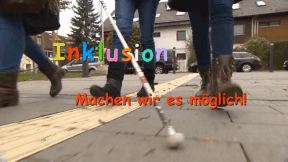 Society
Society

4673651 / 5562341
Drogen und Komasaufen
Harmloser Partyspaß? Weit gefehlt!
Sich die Welt schön trinken, high sein und pfeifen auf den Alltag mit all seinem Stress, Druck und der Verantwortung – was kann schöner sein? Die eigenen Grenzen kennen – gar nicht so leicht als junger Mensch. Die Gefahren legaler und illegaler Drogen sind vielfältig, deren Wirkung gerade für Jugendliche jedoch oft zu verlockend. So auch für Dennis und seine Freunde. Der Film begleitet die Clique beim nächtlichen Feiern und beobachtet, wie der Gruppenzwang einen dazu drängt, mit den anderen mitzutrinken und die eigenen Grenzen aus den Augen zu verlieren. Dass dieser Kontrollverlust auch negative Auswirkungen für andere haben kann, wird zu oft ignoriert. Dabei sind Trunkenheitsfahrten junger Menschen leider keine Seltenheit – immer wieder mit verheerenden Folgen. In einem Experiment werden Probanden auf ihre Fahrtauglichkeit unter erschwerten Umständen geprüft: simulierter Alkohol- und Drogen-einfluss oder auch nur betrunkene Mitfahrer – das Ergebnis kommt für alle erschreckend! Gemeinsam mit dem umfangreichen Unterrichtsmaterial (klassische und interaktive Arbeitsblätter, Testaufgaben, Lehrtexte etc.) ist der Film sehr gut für den Einsatz im Unterricht geeignet.
Play trailer
Curriculum-centred and oriented towards educational standards
Matching
Inclusion
Madita is eleven and blind. She does not want to go to a special school but to a regular grammar school. She says she feels "normal" there. Jonathan is eight and has a walking disability. He likes going to the school where he lives. Here, his best friend sits next to him. Max Dimpflmeier, a teacher who is severely deaf, explains that school life is not easy. Quote Max Dimpflmeier: "You don't want to attract attention, you want to avoid saying that it is necessary for you that 70 people adjust to your situation." People on their way to inclusion.
Mobile Learning II
Oh, what’s that? Original soundtrack Thissen: “As our children grow up in a media world and naturally handle the media, they should also be a topic in school.“ An older child says the point is that they don’t just load down apps but create things themselves that haven’t existed so far. Hi, I’m Jana. A propeller hat. I’ll put it on. Now I’m no longer a simple rhino, but a flying rhino. Original soundtrack Thissen: “It’s exactly the great flexibility of tablets that promotes very personalised and adapted learning.” Original soundtrack Welzel: “It’s fascinating to see how the children grow with their products and how they always want to improve them.” The Westminster Abbey is a church in London for the royal family. Original soundtrack Welzel: “And?“ They think it is ok.
Internet Addiction
The film consists of two parts. The first part is the 15-minute short film “In the Net”. It describes the problem of excessive Internet use in a humorous way, in particular the risk of losing touch with reality when chatting. The second part illustrates with three real persons how Internet addiction can develop and the problems encountered by those who are afflicted. The authentic statements are commented by an experienced therapist. For many pupils, the issues addressed here are related to their everyday lives. What is a “sensible” use of the Internet, where does pathological addiction start? In contrast to addiction to alcohol, nicotine or drugs, the public seems to be largely ignorant of the problem of this addiction, which is not related to any substance abuse. The film provides material for discussion in the classroom (crossdisciplinary) and can be used as a basis for the formulation of prevention strategies.









